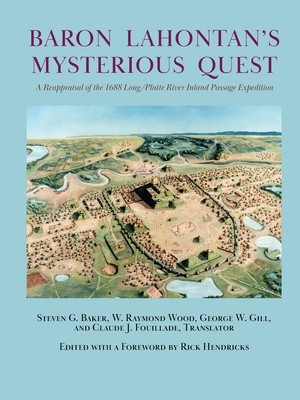
- We will send in 10–14 business days.
- Author: Steven G Baker
- Publisher: Sunstone Press
- ISBN-10: 1632937204
- ISBN-13: 9781632937209
- Format: 21 x 27.9 x 1.7 cm, minkšti viršeliai
- Language: English
- SAVE -10% with code: EXTRA
Reviews
Description
In 1703 the Baron Lahontan (Louis-Armand, le Baron de Lahontan et Heslèche, a French aristocrat, writer, and explorer who served in the French military in Canada) published New Voyages to North America, which contained an account of his search for an inland passage between New France and the Pacific Ocean in 1688-1689, during which he canoed up the "Long River" (Missouri River) seeking its source. Scholars have almost universally discounted his work as largely fictitious and branded the baron a liar. In this book, a distinguished group of scholars familiar with the central Great Plains and the Platte River exposes the many major flaws in Lahontan's critics' judgements and demonstrates the truthfulness of the baron's journal, including descriptions of Native peoples who had never encountered a European prior to Lahontan. The authors applied anthropology, archaeology, ethnohistory, and physical geography, all supported by French and Spanish documents, to carry out this extensive reexamination of Lahontan's narrative. They believe that the baron should rank among the great explorers of North America.
EXTRA 10 % discount with code: EXTRA
The promotion ends in 23d.14:46:48
The discount code is valid when purchasing from 10 €. Discounts do not stack.
- Author: Steven G Baker
- Publisher: Sunstone Press
- ISBN-10: 1632937204
- ISBN-13: 9781632937209
- Format: 21 x 27.9 x 1.7 cm, minkšti viršeliai
- Language: English English
In 1703 the Baron Lahontan (Louis-Armand, le Baron de Lahontan et Heslèche, a French aristocrat, writer, and explorer who served in the French military in Canada) published New Voyages to North America, which contained an account of his search for an inland passage between New France and the Pacific Ocean in 1688-1689, during which he canoed up the "Long River" (Missouri River) seeking its source. Scholars have almost universally discounted his work as largely fictitious and branded the baron a liar. In this book, a distinguished group of scholars familiar with the central Great Plains and the Platte River exposes the many major flaws in Lahontan's critics' judgements and demonstrates the truthfulness of the baron's journal, including descriptions of Native peoples who had never encountered a European prior to Lahontan. The authors applied anthropology, archaeology, ethnohistory, and physical geography, all supported by French and Spanish documents, to carry out this extensive reexamination of Lahontan's narrative. They believe that the baron should rank among the great explorers of North America.


Reviews